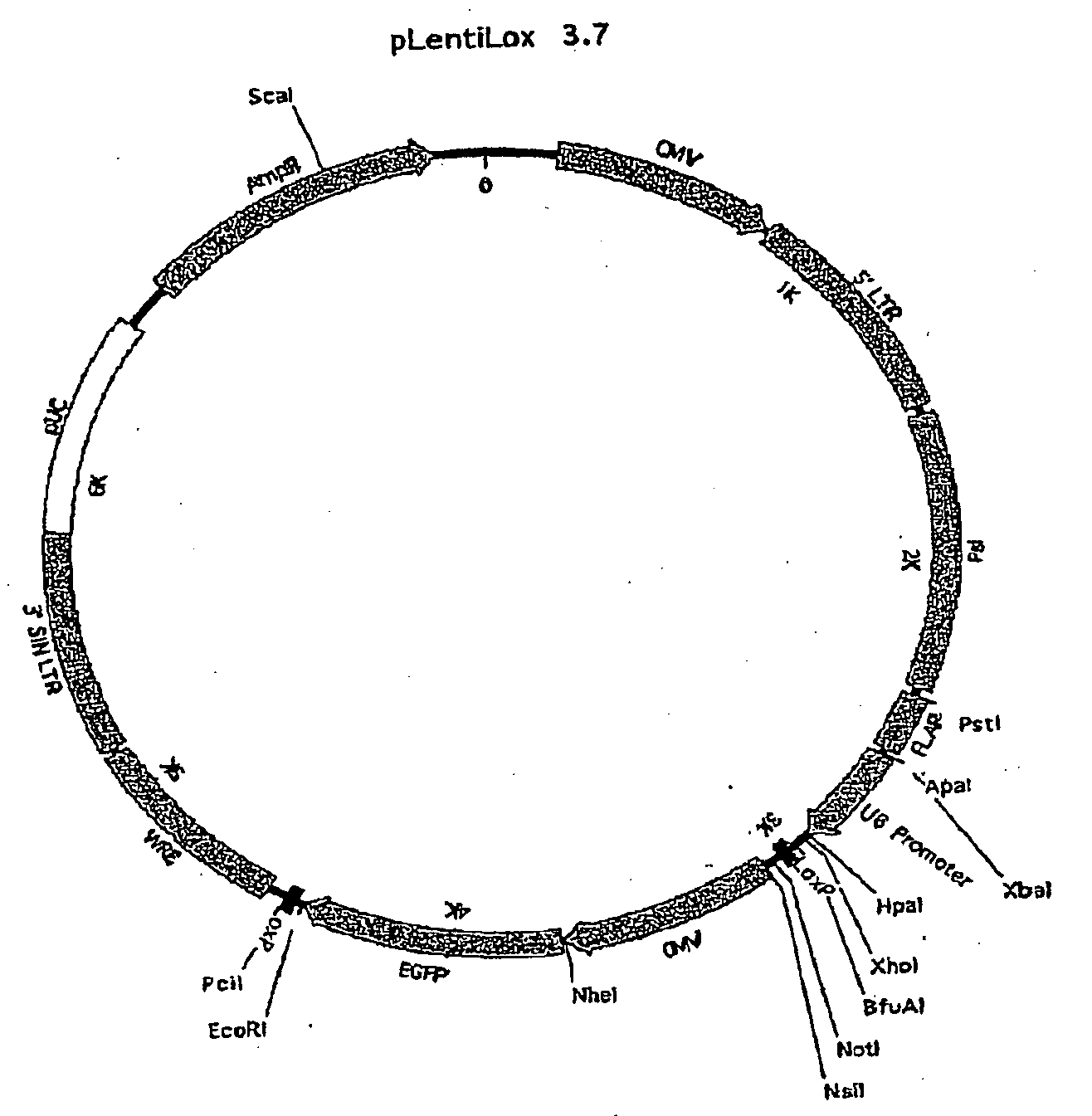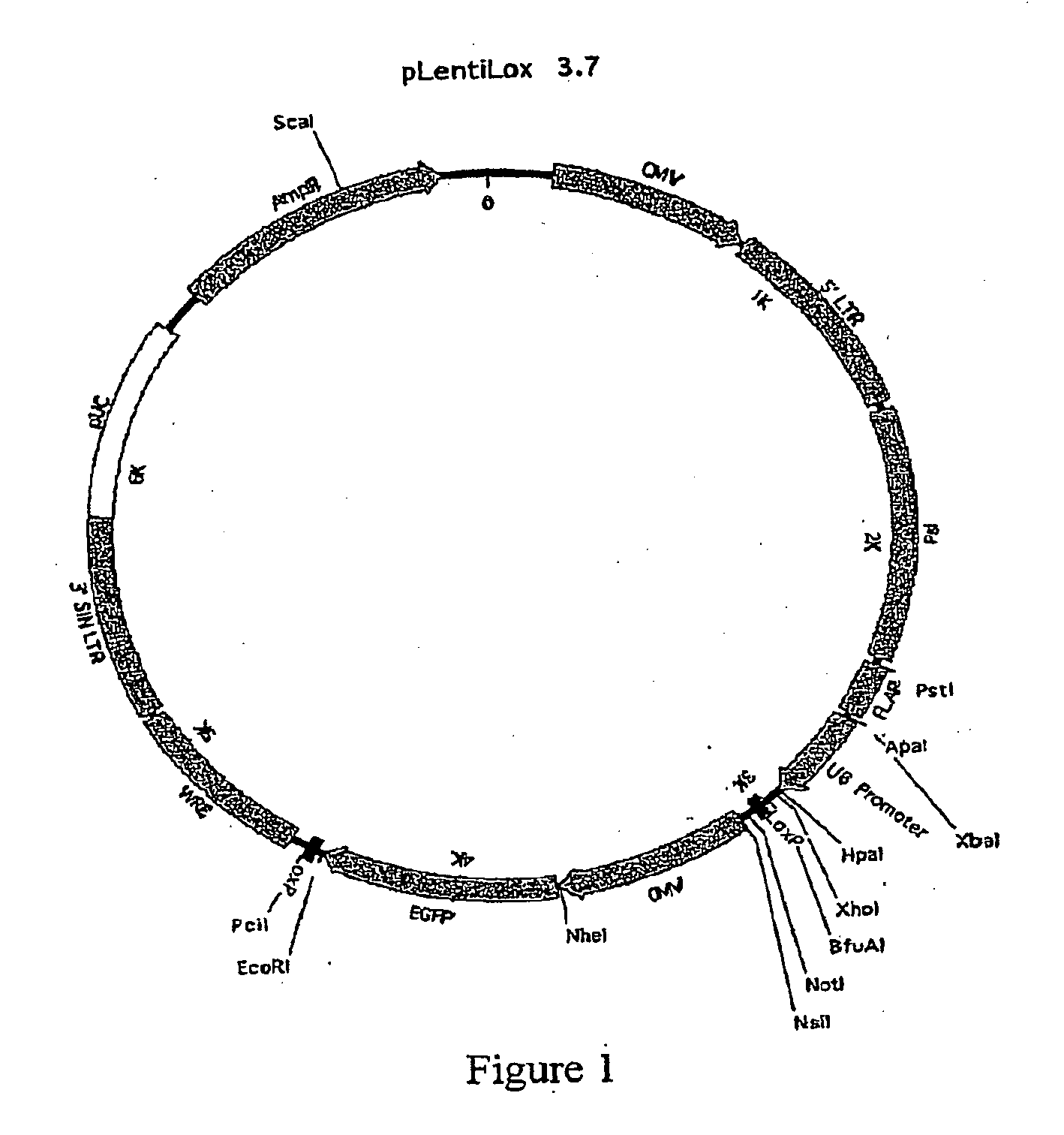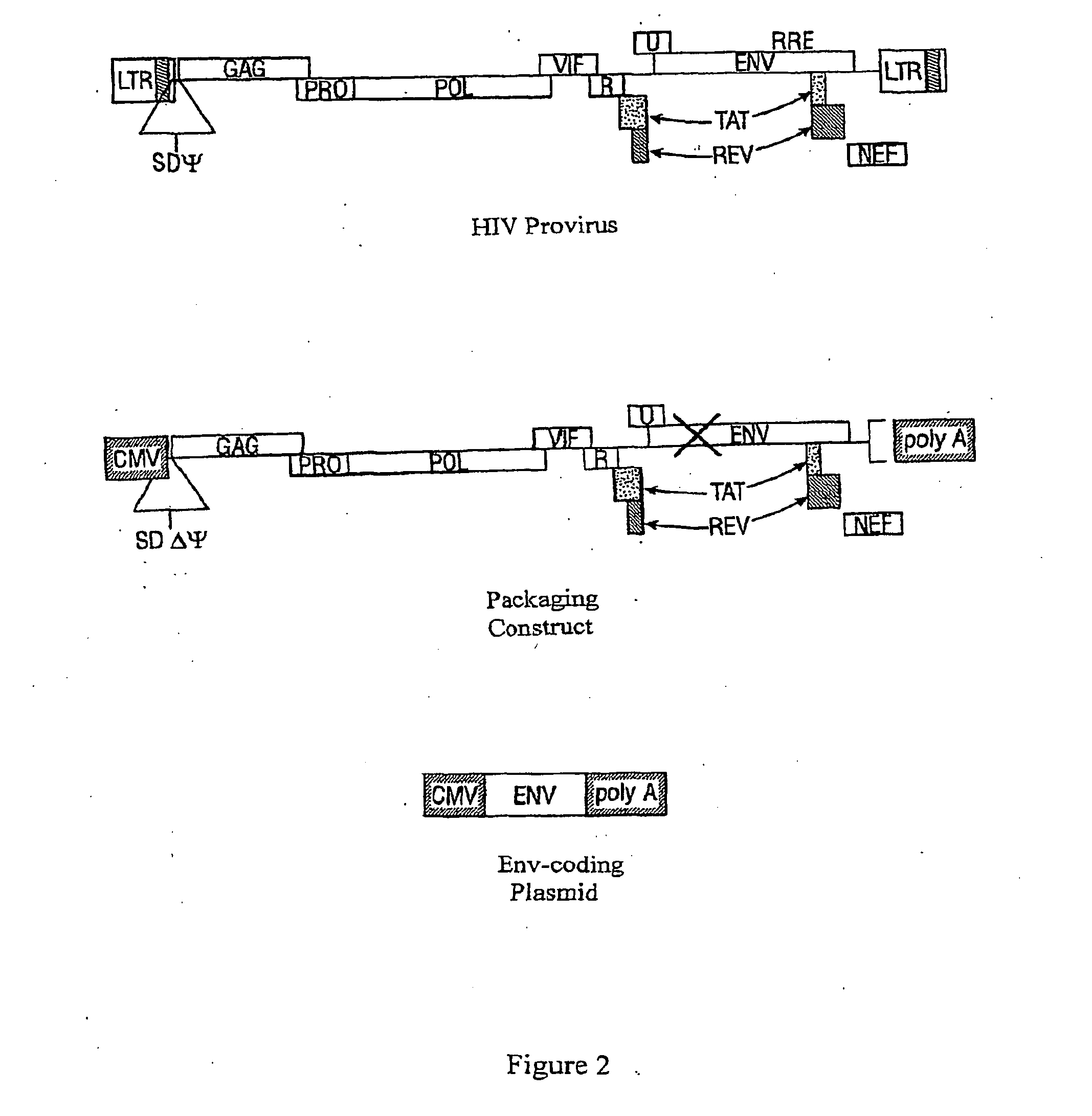Lentiviral Vectors That Provide Improved Expression And Reduced Variegation After Transgenesis
- Summary
- Abstract
- Description
- Claims
- Application Information
AI Technical Summary
Benefits of technology
Problems solved by technology
Method used
Image
Examples
example 1
Selection of a Candidate Type I Diabetes-Associated Gene for Analysis by RNAi
Materials and Methods
[0230]Congenic NOD Strains
[0231]The Idd5.1 and Idd5.1 / Idd5.2 strains used have been reported previously as NOD.B10 Idd5R193 and NOD.B10 Idd5R444, respectively (Wicker, 2004). The Idd5.2 strain is a novel congenic strain developed from the Idd5.1 / Idd5.2 by marker-assisted breeding as detailed previously (Hill, 2004).
[0232]The development of the NOD.B10 Idd5.1 / Idd5.2 (R444) N13, NOD.B10 Idd5.1 / Idd5.2 (R444s) N14 and Idd5.1 / Idd5.2 (R193) N16 congenic strains and the extent of disease protection due to their protective alleles have been detailed (Wicker, 2004). R444s and R193 define the distal and proximal boundaries, respectively, of Idd5.2. The Idd5.1 interval was initially defined in the context of a protective allele at the Idd5.1 region (Wicker, 2004; and Hill, 2004). The NOD.B 10 Idd5.1 (R52) N14 strain is a novel strain and its reduced frequency of diabetes as compared to the NOD str...
example 2
Design and Construction of a Lentiviral Vector Showing Reduced Variegation after Transgenesis
Materials and Methods
[0240]Generation of the pLB Vector
[0241]pLL3.7 is a lentiviral transfer plasmid that comprises a U6 promoter located upstream of a multiple cloning site suitable for insertion of a template for transcription of an shRNA (Rubinson, et al., 2003). Anti-repressor #40 (ref 17) was amplified from genomic DNA using the following primers: 5′ sense-ATATGGGCCCGGTGCTTTGCTCTGAGCCAGCCAC (SEQ ID NO: 123), 3′ antisense-ATATGGGCCCTGGCAGAAATGCAGGCTGAGTGAG (SEQ ID NO: 124) and cloned into the ApaI restriction site of pLL3.7. The human IFN-β SAR element (Klehr, 1991) was kindly provided by Dr. J. Bode and cloned into the blunted KpnI restriction site of pLL3.7.
[0242]Generation of Lentivirus and Embryo Transgenesis
[0243]Lentiviral production was done as described previously (Rubinson, et al., 2003; and U.S. Patent Publication 2005 / 0251872). Briefly, lentiviral pLL3.7 or pLB vector was co-t...
example 3
Design and Testing of shRNA to Target Nramp1 mRNA
Materials and Methods
[0251]Short Hairpin RNA Design
[0252]Nramp1 target sequences were selected according to criteria described previously (Schwarz, 2003; Khvorova, 2003; Reynolds, 2004): 545-GGACGGCTATCTCCTTCAA (SEQ ID NO: 125), 666-GCTTTCTTCGGTCTCCTCA (SEQ ID NO: 127), 870-GGTCAAGTCTAGAGAAGTA (SEQ ID NO: 126), 915-GCCAACATGTACTTCCTGA (SEQ ID NO: 128), 2196-GGCTCACAACCATCCATAA (SEQ ID NO: 129). These target sequences were used for the design of shRNA sequences as described previously (Rubinson, 2003). The complete sequences of the two oligos that were used for the 915 shRNA are as follows:
Forward:(SEQ ID NO: 130)5′TGCCAACATGTACTTCCTGATTCAAGAGATCAGGAAGTACATGTTGGCTTTTTTC 3′Reverse:(SEQ ID NO: 131)5′TCGAGAAAAAAGCCAACATGTACTTCCTGATCTCTTGAATCAGGAAGTACATGTTGGCA 3′
[0253]The resulting shRNA sequences were cloned into the pLB vector using the HpaI and XhoI restriction sites. FIG. 6d shows the Nramp1 stem loop sequence and the Nramp1 shRNA pred...
PUM
| Property | Measurement | Unit |
|---|---|---|
| Fraction | aaaaa | aaaaa |
| Fraction | aaaaa | aaaaa |
| Fluorescence | aaaaa | aaaaa |
Abstract
Description
Claims
Application Information
 Login to View More
Login to View More - R&D
- Intellectual Property
- Life Sciences
- Materials
- Tech Scout
- Unparalleled Data Quality
- Higher Quality Content
- 60% Fewer Hallucinations
Browse by: Latest US Patents, China's latest patents, Technical Efficacy Thesaurus, Application Domain, Technology Topic, Popular Technical Reports.
© 2025 PatSnap. All rights reserved.Legal|Privacy policy|Modern Slavery Act Transparency Statement|Sitemap|About US| Contact US: help@patsnap.com



